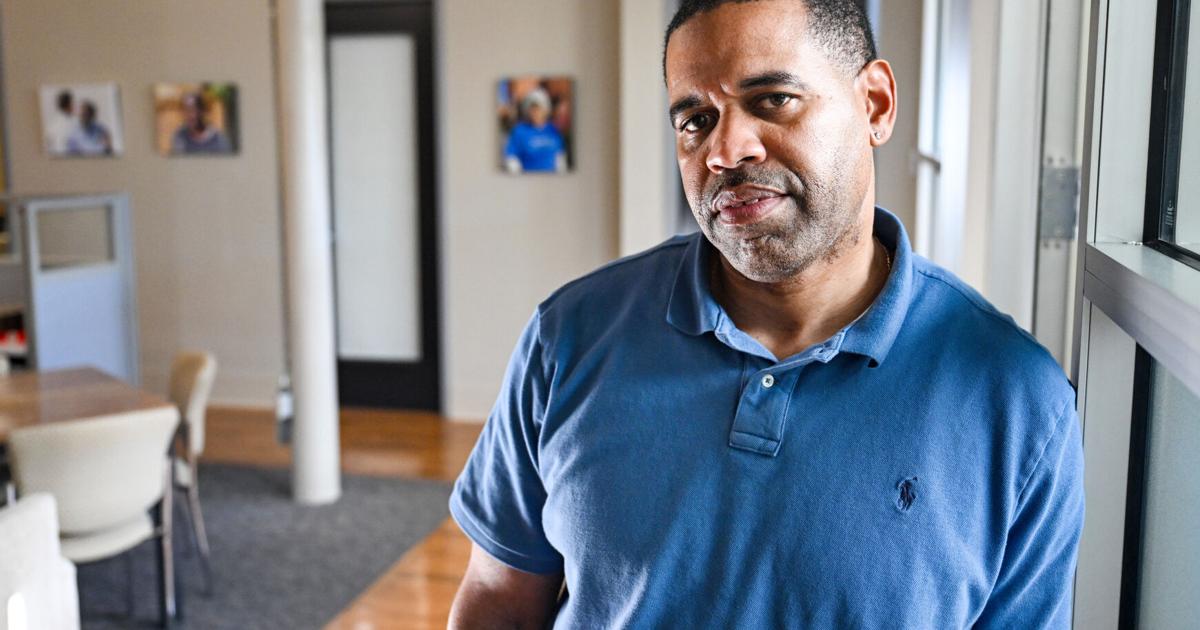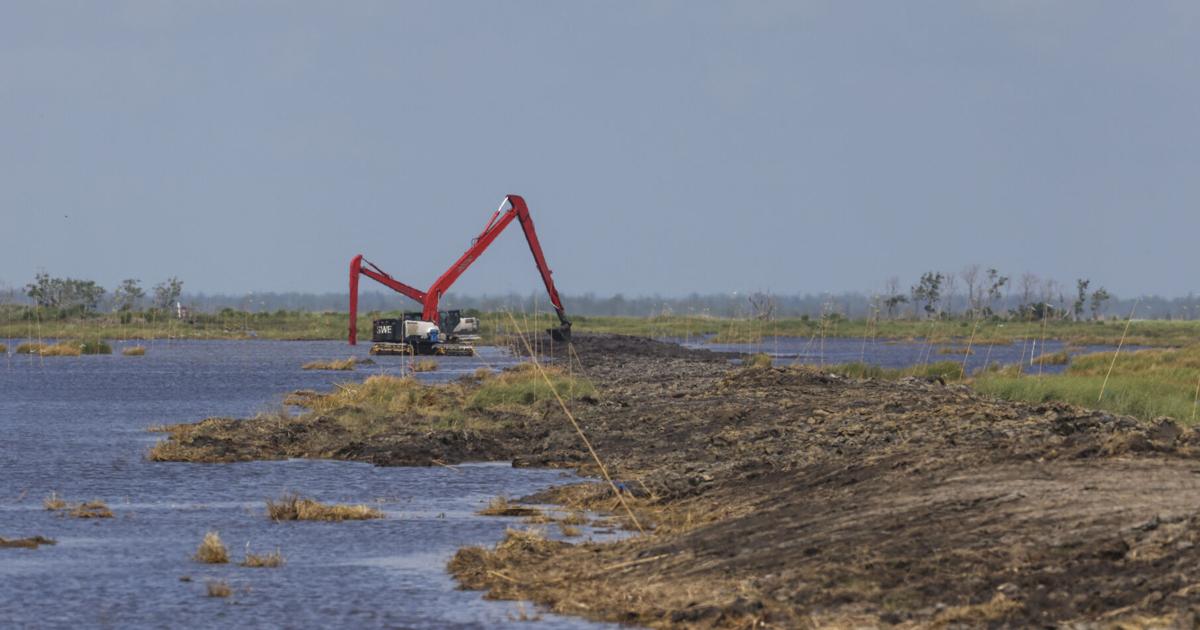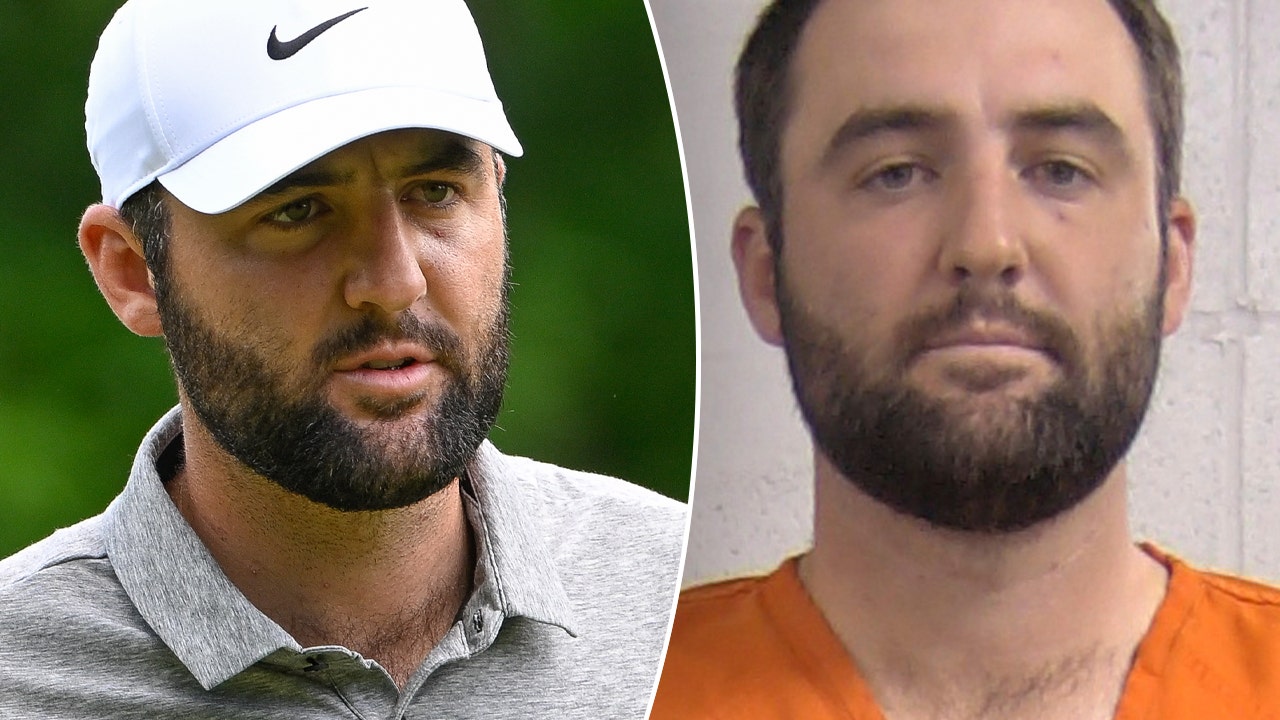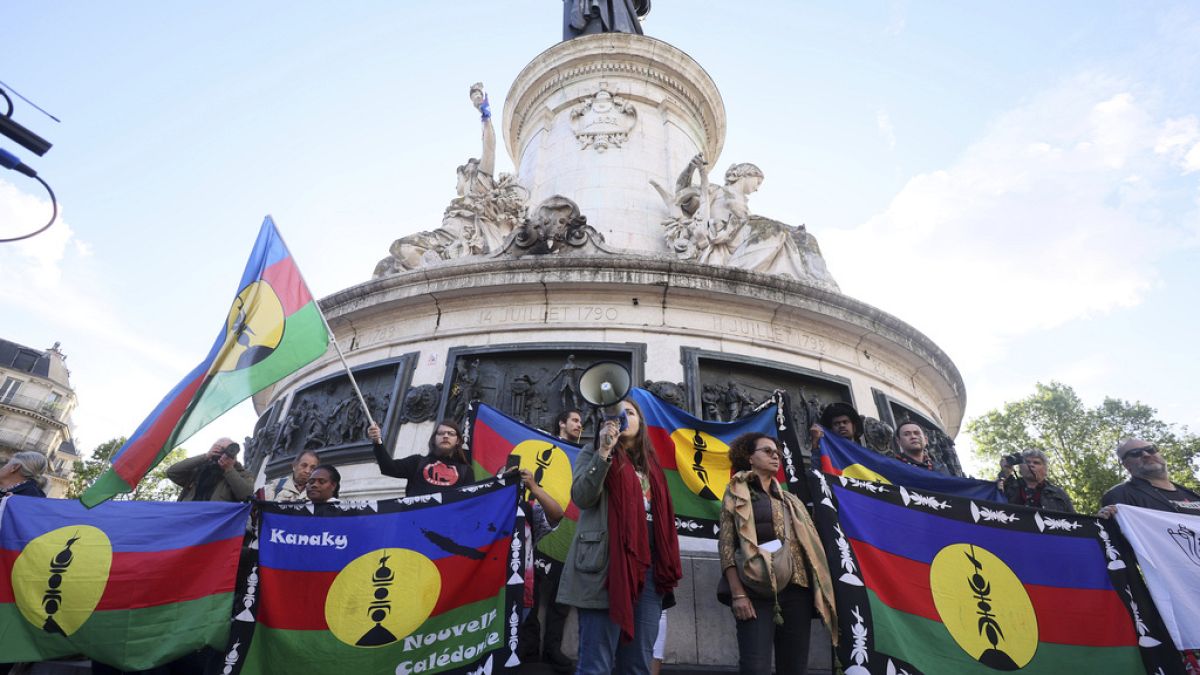Louisiana
Residents unhappy with Louisiana insurance crisis under Jeff Landry, Tim Temple, poll shows

Louisiana voters, unhappy with a property insurance crisis that has caused intense rate hikes, are broadly dissatisfied with Gov. Jeff Landry and Insurance Commissioner Tim Temple’s handling of the issue, according to a statewide poll conducted for the Times-Picayune | The Advocate.
The poll reflects an enduring angst Louisianans feel about property insurance, which has become dramatically more expensive after a dozen insurers went bust following the 2020 and 2021 hurricane seasons and a number of others fled the state. The poll surveyed 800 voters around the state, primarily by cell phone, from April 22-26. It has a margin of error of 3.5%.
The results point to a political problem for Landry and Temple, both Republicans who took office in January. While Landry enjoys high approval ratings on most issues the poll covered, voters disapproved of his handling of insurance by a net 39 points, a notable outlier in the poll.
For Temple, who took office in January after running unopposed, the problem may be more dire. The poll found that he is unknown to many voters, and that he is underwater with the ones who do know him – perhaps because they associate him with a crisis. Only 21% have a favorable opinion of Temple, while 28% have an unfavorable view.
“It’s an issue that I think the voters are very upset about,” said pollster Ron Faucheux. “When they have an opportunity to state an opinion, it’s pretty negative toward what’s going on. It was by far the biggest negative that the governor has right now.”
The poll comes just after the Legislature passed a sweeping package of bills championed by Temple that would allow insurers to drop policyholders and raise rates more easily, among other things.

Temple, a former insurance executive whose strategy has been endorsed by the insurance industry, argues the effort will attract more insurers to the state, and that the resulting competition will drive down rates. He has remained confident the plan will work, and has encouraged people to blame him if it doesn’t.
“Louisianans are clearly frustrated by the poor property and auto insurance markets they’ve had to deal with for years now,” Temple said Monday in response to the poll’s findings. “I’m frustrated, too. That’s why I’m focused on solutions that will help Louisiana families and businesses by addressing the availability and affordability of insurance in our state.”
Several of the bills are awaiting the signature of Landry, which is expected. Landry’s office didn’t respond to an email seeking comment.
The poll results may reflect voters’ basic frustration with the cost of insurance as much as they reflect policy disagreements with Landry and Temple. But to the extent voters are familiar with Temple or his strategy, they tend to disagree with it. Asked about one key change Temple pushed – eliminating a longstanding and unique rule barring insurers from dropping policyholders after three years – 68% of voters said they disagreed with it.
Even if Temple’s plan to foster competition does work, it could take years for homeowners to feel the effects. Even then, some analysts believe Louisiana will likely continue to see relatively high rates because of rising climate risks.
Landry and Temple both took office in January, meaning they’ve had little time to enact changes that could improve the tumultuous insurance market, which has seen years of rate hikes.
Temple wanted Landry to call the Legislature into a special session to take on insurance shortly after the two were sworn in. But the governor has not made insurance a top issue, and instead held special sessions on redistricting and crime.
Voters appear dissatisfied with Landry’s efforts so far: Those polled said they disapprove of his handling of the insurance issue by a 60%-21% margin.
Not surprisingly, perhaps, the poll found a geographic split, with people in coastal South Louisiana far more perturbed about insurance than those in Central and North Louisiana. It was the No. 1 issue for 23% of those polled in South Louisiana, compared to 13% in the rest of the state.
Kimberly Powell, who has lived in a townhome in Baton Rouge for 12 years, said her premiums have skyrocketed, squeezing her finances. Her friends in New Orleans are in the same boat, and she said people are being priced out of living in Louisiana generally.
Insurance, she said, is her top issue.
“There are a lot of problems related to that insurance question,” said Powell, who said she votes mostly for Democrats. “Nothing I’ve seen from the current administration seems like it would have the slightest possibility of making things better.”
The only thing she’s heard state leaders like Landry and Temple doing is making it easier for insurers to drop policyholders, which she believes will only worsen the problem. Powell said she’d like to see leaders bolster the insurer of last resort, Citizens, into a viable safety net.
“My salary is not doubling every year,” Powell said, even though insurance premiums are.
Read next: Louisiana voters so far approve of Jeff Landry’s politics, poll shows. Here’s why.
Read next: Jeff Landry, Louisiana lawmakers went too far on permitless concealed carry, poll shows
How the poll was conducted
Faucheux Strategies, a nonpartisan research firm based in Louisiana, interviewed a representative sample of 800 registered voters across Louisiana between April 22-26.
Trained professionals conducted the interviews by telephone; 79% of them were contacted on cell phones and 21% on landlines.
The calls were based on a scientifically selected, random sample of state voters. The racial composition of the sample was 64% White, 30% Black and 6% other. For this poll, “independent” includes people who have no party affiliation and people who are affiliated with a third party. The poll’s margin of error is +/- 3.46%.

Louisiana
Endangered whale spotted in western Gulf faces industrial dangers • Louisiana Illuminator

Evidence is mounting that an exceedingly rare whale, unique to the Gulf of Mexico, ranges farther west than previously thought, prompting new worries about the dangers it faces from heavy ship traffic and other industrial activities near Louisiana and Texas.
Scientists spotted two of the approximately 75 remaining Rice’s whales during an aerial survey of marine animals in the western Gulf last month. National Oceanic and Atmospheric Administration researcher Laura Dias saw one of the bus-size whales breaching the surface about 55 miles from Corpus Christi, Texas on April 11.
“I felt a wave of excitement and relief,” she said, describing the culmination of an “intense effort” to photograph the endangered whale species west of Louisiana. Found to be a distinct species just three years ago, the shy, deep-diving Rice’s whale remains largely a mystery. Scientists are racing to learn the basics, including how the whale eats, breeds and communicates, before the species goes extinct.
Recent audio recordings have also offered proof of the whale’s frequent travels in the western Gulf. A NOAA-led analysis of underwater sounds detected the whale’s distinctive “long moan” several times off the coasts of Louisiana and Texas, and offered the first evidence of the whale in Mexico’s waters.
“This is new knowledge and is critical for our understanding [of the whales] given how heavily industrialized that portion of the Gulf is,” said Melissa Soldevilla, a NOAA scientist who led the acoustical research.
The photos and recordings have upended the theory that the Rice’s whale rarely strayed from DeSoto Canyon in the eastern Gulf near Alabama and Florida.
Ships, oil and plastic
The new evidence was troubling for Michael Jasny, a marine mammal protection expert with the Natural Resources Defence Council.
“The vast majority of the risk this species faces is from vessel strikes,” he said. “There’s so much more vessel traffic in the central and western Gulf than there is in the east.”
Texas and Louisiana have several busy shipping hubs, including Houston, the U.S.’s fifth-largest container port, and Port Fourchon, which serves nearly all of the Gulf’s 3,200 active oil and gas structures.
Rice’s whales are “severely vulnerable” to ship strikes because they rest just below the surface at night, Jasny said. This behavior contrasts with most whales, which tend to be nocturnal. A dozing whale is less likely to notice an oncoming vessel, and the vessel’s crew is less likely to spot the whale in the dark.
In 2021, environmental groups petitioned NOAA to set a 10-knot speed limit around DeSoto Canyon. The proposal drew about 75,500 comments and strong opposition from the shipping and oil industries. In October, NOAA denied the petition in favor of an effort to get vessels to slow down voluntarily.
Jasny noted that NOAA adopted a similar 10-knot speed limit along the East Coast to protect the North Atlantic right whale, a species that’s also endangered but has a population that’s likely three times larger than the number of Rice’s whales.
Gulf Coast political leaders have expressed opposition to other measures to protect the whale, including a NOAA proposal to designate 28,000 acres in the Gulf as a new critical habitat.
On May 1, U.S. senators John Kennedy and Bill Cassidy of Louisiana and Cindy Hyde-Smith and Roger Wicker of Mississippi wrote a letter to NOAA warning against “unnecessary measures for the Rice’s whale at the expense of communities along the Gulf of Mexico.” The Republican senators believe whale-related restrictions on shipping and oil and gas development “would directly harm the economic activity and jobs.”
Rice’s whales are also threatened by oil spills, ocean trash, entanglement in fishing gear and noise, especially blasts from seismic airgun surveys that companies use to find offshore oil deposits.
BP’s Deepwater Horizon oil disaster in 2010 killed nearly 20% of the Rice’s whale population and likely caused widespread health problems and pregnancy failures, according to a NOAA-led assessment.
The growing problem of plastic pollution has also proved fatal for at least one of the whales. In 2019, a 38-foot-long male that washed up on a Florida beach was found to have been killed by a jagged piece of plastic that became lodged in its stomach.
Discovering a new species
The whale’s death had a silver lining, though. The carcass was a treasure trove of information for scientists and helped prove that the Rice’s whale is a distinct species.
Scientists had long thought Rice’s whales were a Gulf-dwelling variety of Bryde’s whales, another endangered species that ranges widely in the Atlantic and Pacific oceans. Rice’s and Bryde’s whales look almost identical. They grow to around 55 feet, weigh about 30 tons, use baleen to filter-feed and are part of what NOAA calls the “great whales,” a group that includes humpback, sperm and blue whales. But the dead specimen offered a rare opportunity to get a close look at the Rice’s whale’s organs, skeleton and DNA, all of which revealed clear differences.
A growing body of research indicates the whales’ behavior also sets them apart. While Bryde’s whales feed near the surface on a range of seafood, including krill, shrimp, herring and other small fish, Rice’s whales like to dive deep for one particular menu item: the silver-rag driftfish. And, unlike the free-ranging Bryde’s whales, Rice’s whales are homebodies, preferring to stick to the Gulf’s warm waters.
Some scientists wanted to name the newly-discovered species the “Gulf of Mexico whale” or the “American whale,” because it lives almost entirely in U.S. waters.
In the end, the NOAA scientists who confirmed the whale was a distinct species decided to name it in honor of Dale Rice, a biologist who first recognized some 60 years ago that the Bryde’s whales in the Gulf seemed different from other Bryde’s whales.
Regardless of what they’re called, Jasny hopes more Americans – especially Gulf Coast residents – come to appreciate this massive and mysterious animal, and understand how close it is to vanishing forever.
“This is a really remarkable species,” he said. “They’re unique to the Gulf and even the U.S. We want to make sure people realize how unique they are and how dependent they are on the habitat of the Gulf.”
This article first appeared on Verite News and is republished here under a Creative Commons license.![]()
Louisiana
Louisiana softball advances to Lafayette Regional finals after defeating Princeton on Saturday

No. 13 Louisiana Ragin’ Cajuns defeated Princeton for the second time in two days, 2-1, clinching a spot in the Lafayette Regional championship against Baylor.
The Ragin’ Cajuns started sophomore Chloe Riassetto in the circle for the second time in as many days against the Tigers, and she was great once again pitching a complete eight innings with just four hits allowed, one strikeout, no walks and one run allowed.
MORE: Louisiana softball advances to Lafayette Regional semifinals after defeating Princeton on Friday
MORE: UL-Lafayette softball: scouting report for the Lafayette Regional in the NCAA Tournament
Louisiana began its scoring in the second inning with a bases loaded sac fly from sophomore catcher Victoria Valdez, bringing in a run and giving the Ragin’ Cajuns an early 1-0 lead.
The Tigers responded right away with a two-out single to center field to tie the game at one at the bottom of the third inning.
There was no scoring from either team until the eighth inning where junior Alexa Langeliers began the inning with a triple, which then led to a sacrifice fly from Cecelia Vazquez to give the Rajun’ Cajuns the 2-1 win.
With tonight’s win, Louisiana advances to the Lafayette Regional final where they will face Baylor in a rematch of Saturday’s matchup where the Bears mercy ruled the Ragin’ Cajuns.
Since it is double elimination, Louisiana must win two games against the Bears to be Lafayette Regional champions, while the Bears need to win just once to be the champions.
The time for the championship is to be determined.
Louisiana
Baylor softball shuts out No. 13 Louisiana, wins 8-0

WACO, Texas (KWTX) – The Baylor softball team pulled off a shutout victory Saturday, beating No. 13 University of Louisiana 8-0 in five innings.
After a scoreless first inning, the Bears offense erupted in the second inning with 7 runs.
Baylor’s Sydney Collazos got the scoring started after advancing to first on an error by Louisiana’s first baseman, allowing Ana Watson to score.
The Bears secured the win in the fifth inning after Baylor’s Shaylon Govan hit a homerun into left field, prompting the NCAA’s “run-ahead” rule.
The NCAA’s “run-ahead” rule in D1 softball states that if a team is winning by eight or more runs after at least five innings have been played, the umpire can declare the team leading as the winners.
Baylor’s pitcher RyLee Crandall picked up the win, getting three strikeouts and only allowing two hits the entire game.
Copyright 2024 KWTX. All rights reserved.
-

 World1 week ago
World1 week agoIndia Lok Sabha election 2024 Phase 4: Who votes and what’s at stake?
-

 Politics1 week ago
Politics1 week agoTales from the trail: The blue states Trump eyes to turn red in November
-

 World1 week ago
World1 week agoBorrell: Spain, Ireland and others could recognise Palestine on 21 May
-

 Politics1 week ago
Politics1 week agoFox News Politics: No calm after the Stormy
-

 World1 week ago
World1 week agoUkraine’s Zelenskyy fires head of state guard over assassination plot
-

 Politics1 week ago
Politics1 week agoUS Border Patrol agents come under fire in 'use of force' while working southern border
-

 World1 week ago
World1 week agoCatalans vote in crucial regional election for the separatist movement
-

 News7 days ago
News7 days agoSkeletal remains found almost 40 years ago identified as woman who disappeared in 1968







/cdn.vox-cdn.com/uploads/chorus_asset/file/25430225/247065_Vergecast_Gaming_Senses_Smell_SHaddad.png)











